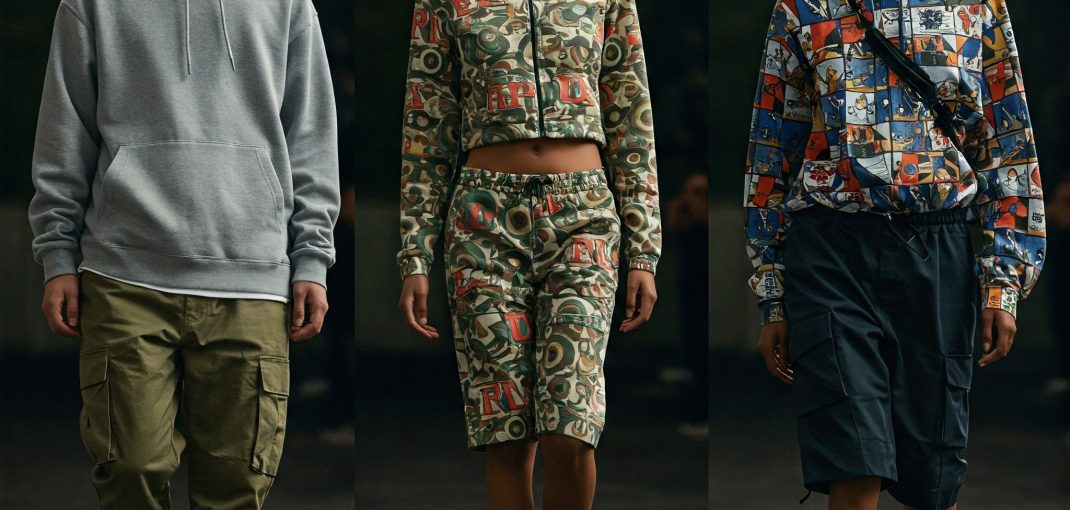Streetwear, once a niche style born from urban subcultures, has exploded into a global fashion phenomenon, fundamentally altering the landscape of contemporary style and challenging the traditional hierarchies of the fashion world. Its journey from the sidewalks and skate parks to the high fashion runways is a compelling narrative of cultural evolution, rebellious self-expression, and the ever-blurring lines between high and low culture.
The roots of streetwear can be traced back to the 1970s and 1980s, emerging almost simultaneously from distinct but interconnected subcultures in the United States. On the West Coast, the burgeoning surf and skate scenes in California fostered a relaxed, functional, and logo-driven aesthetic. Shawn Stussy, a surfboard shaper who began screen printing his distinctive logo onto t-shirts and shorts, is widely credited as a pioneer of this early streetwear. His brand, Stüssy, captured the laid-back attitude and creative spirit of the surf and skate communities, building a loyal following through limited releases and a strong sense of authenticity.
Meanwhile, on the East Coast, particularly in the Bronx, the rise of hip-hop culture was forging its own distinct visual identity. Influenced by athletic wear, graffiti art, and customized clothing, early hip-hop fashion was characterized by oversized silhouettes, tracksuits, gold chains, and iconic sneakers. Brands like Adidas, Puma, and later, homegrown labels like Dapper Dan’s custom creations, became synonymous with this burgeoning style. Hip-hop artists used clothing as a form of self-expression and a statement of identity, and this raw, authentic approach resonated deeply with urban youth.
What connected these early forms of streetwear was a shared ethos of authenticity, comfort, and a rejection of mainstream fashion norms. It was about wearing what felt right, what represented your community and your interests, rather than conforming to dictated trends. The focus was often on graphic t-shirts, comfortable hoodies, durable denim, and, crucially, sneakers. Sneakers, in particular, became a central pillar of streetwear culture, evolving from purely athletic footwear to coveted fashion items with their own complex hierarchy of rarity, collaborations, and historical significance.
The 1990s saw streetwear gain further traction and begin to coalesce as a more defined movement. Brands like Supreme, founded in New York City, built upon the foundation laid by Stüssy, employing a similar strategy of limited product drops, collaborations with artists and other brands, and cultivating an aura of exclusivity and desirability. This era also saw the increasing influence of Japanese streetwear, with brands like A Bathing Ape (BAPE), founded by Nigo, introducing bold graphics, camouflage patterns, and a playful, often कार्टून-inspired aesthetic that resonated globally.
The early 2000s witnessed streetwear’s continued rise, fueled by the internet and the increasing visibility of hip-hop culture in mainstream media. Online forums and communities allowed enthusiasts to connect, share information about releases, and participate in the burgeoning resale market. Streetwear began to move beyond its core subcultural roots and gain recognition from a wider audience. Celebrities and musicians adopted the style, further amplifying its reach and desirability.
The true turning point, arguably, came in the last decade, as high fashion brands began to embrace and collaborate with streetwear labels and designers. This marked a significant shift, as the once-disparate worlds of luxury and street style converged. Collaborations between brands like Louis Vuitton and Supreme, or designers like Virgil Abloh (the late artistic director of Louis Vuitton menswear and founder of Off-White), legitimized streetwear in the eyes of the traditional fashion establishment and introduced it to a new, high-end consumer base.
This convergence has led to streetwear influences being seen on runways around the world, with designers incorporating elements like oversized silhouettes, graphic logos, sneakers, and casual fabrics into their collections. The once-clear distinction between “high fashion” and “streetwear” has become increasingly blurred, with many contemporary brands occupying a space that blends elements of both.
The cultural significance of streetwear lies in its ability to reflect and represent contemporary culture. It is deeply intertwined with music, art, sports, and social movements. Streetwear brands often build strong communities around them, fostering a sense of belonging and shared identity among their customers. The emphasis on limited releases and collaborations creates a sense of hype and collectibility, turning clothing into cultural artifacts.
However, streetwear’s journey to the mainstream has not been without its complexities. Some purists argue that its widespread adoption and integration into the luxury market have diluted its original rebellious spirit and authenticity. The focus on hype and resale value can sometimes overshadow the creative and cultural aspects of the clothing.
Despite these debates, the enduring impact of streetwear is undeniable. It has democratized fashion, making it more accessible and relatable to a wider audience. It has challenged traditional notions of luxury and taste, proving that comfort and authenticity can be just as desirable as haute couture. It has provided a platform for diverse voices and perspectives within the fashion industry.
Today, streetwear continues to evolve, incorporating new influences and adapting to changing consumer preferences. Sustainability and ethical production are becoming increasingly important within the streetwear landscape, reflecting a broader societal shift. The digital realm, including virtual fashion and NFTs, is also opening up new possibilities for streetwear expression and ownership.
From its humble beginnings in Californian surf shops and Bronx block parties, streetwear has embarked on a remarkable cultural odyssey. It has not only transformed the way we dress but also the way we think about fashion, proving that true style can emerge from anywhere and resonate with people across the globe. Its influence is deeply woven into the fabric of contemporary culture, ensuring that the spirit of the street will continue to shape the future of fashion.


